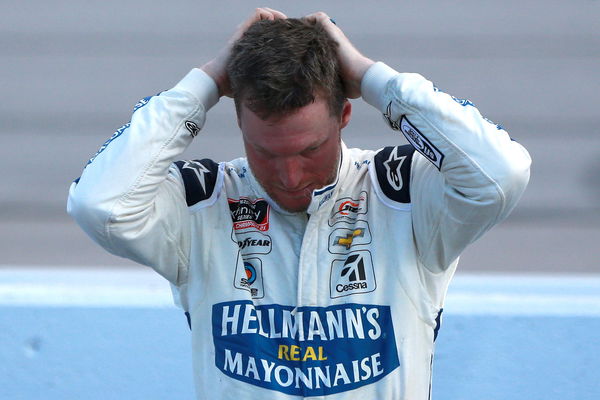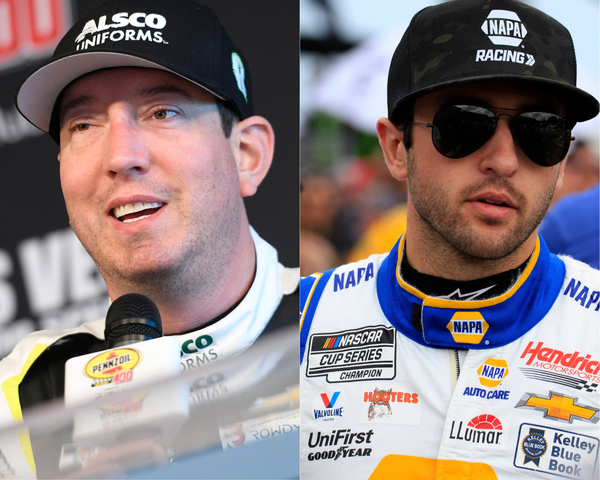Failed NASCAR Ambition: The Bizarre Case Of The Left-right Street Course Racing

Follow Us

USA Today via Reuters
Jul 2, 2023; Chicago, Illinois, USA; A general view as cars race along Grant Park during the Grant Park 220 of the Chicago Street Race viewed from the NEMA Chicago buliding. Mandatory Credit: Jon Durr-USA TODAY Sports
Close racing and excitement are the factors that have made street circuit racing widely popular among motorsports fans around the globe. Today, several series have street circuits on their calendars. But NASCAR is not associated with that kind of racing. The competition did race on the streets of Chicago in 2023, but that was not the first time. Back in the 1980s, the organizers were seriously considering several permanent street racing tracks on the calendar and even had special cars, known as Left-Right cars for that purpose. However, the idea vision never stuck and had to be scrapped pretty quickly.
The L-R Series, as it was called back then, was not supposed to be separate from the Cup Series. The organizers of the time had proposed a plan that would see 5 races in the competition being run on street circuits in those special cars. But why did NASCAR even think about going in that direction in the first place?
The L-R project had gotten off to a good start after Riverside dilemma
ADVERTISEMENT
Article continues below this ad
During the mid-1980s, street racing was gaining a lot of popularity among motor sports enthusiasts. The likes of Formula One, IMSA and IndyCar were organizing frequent races on streets which saw fans turn up by the thousands. At the time, NASCAR organizers felt that street circuits would be the answer to 2 of their problems. Firstly, the sport would gain popularity and, in turn, more money. And secondly, there was a risk of the competition not being held on the western side of the country.
When it was first reported in 1985 that NASCAR was looking to try its luck on street circuits, the stock car racing competition only raced on one track west of the Mississippi for 2 races a season in the Cup Series, the Riverside International Raceway. However, with the track being purchased by real estate investors, there were talks of it being torn down by 1986. The sport would have completely lost its market in the west and so they were left with no choice but to look for alternatives.
Building oval tracks was not a feasible option back then. But the idea of street racing in a special car was hailed by several icons of the time. “I think it’s a heck of a good idea cause we need to have the races in the major areas , markets that NASCAR is talking about,” said Junior Johnson at the time. Even The King Richard Petty had a positive outlook. “I’ve been saying for 4 or 5 years. We needed to get into the markets. They’re talking about for our sponsors’ sake,” the 7-time Cup Series champion had said.
The NASCAR L-R prototype car, a 1986 Pontiac Sunbird tested by Dale Earnhardt at the Charlotte roval, later rebodied as a 1996 Monte Carlo, sold at Mecum for $16,500
It has no engine but would be a cool restoration project pic.twitter.com/nJQCtAFc1l
— nascarman (@nascarman_rr) January 14, 2024
The L-R cars were supposed to be a lot lighter than the cars that used to run in the normal Cup Series races with V6 engines under their hoods. The cars that were planned to be used were the Ford Mustang, Chevrolet Cavalier, and the Pontiac Sunbird. Several track owners expressed their interest in hosting, who were taken by the lore of street racing in NASCAR, along with drivers from outside the States. Everything looked fine and dandy until this point. NASCAR seemed to have a solid plan moving forward. So why did things fall apart?
Why did NASCAR scrap the L-R project after so much promise?
Trending

“I’m Frustrated”- Despite $400 Million Net Worth Tag, Dale Earnhardt Jr Reveals His Only “Cheaper” NASCAR Miss
May 01, 2024 10:32 AM EDT

Joe Gibbs Racing Warn Rick Hendrick Camp Against Underestimating Desperate Underdogs
April 30, 2024 10:48 PM EDT

Next-Gen Stats Sell Out Richard Childress’ Disgruntled Grandson as Riled Up Fans Beg to Preserve Dale Earnhardt’s Legacy
April 30, 2024 07:55 AM EDT

NASCAR Rumor: Kyle Busch Could Fulfill Shattered Indy 500 Dream as ‘Chase Elliott 2.0’ Triggers Controversial Fallout
April 30, 2024 04:32 AM EDT

“That’s What Dale Earnhardt Did”—NASCAR Veteran Dissects Rick Hendrick’s Call to Commit Financially Behind HMS Star
May 01, 2024 04:48 AM EDT
Get instantly notified of the hottest NASCAR stories via Google! Click on Follow Us and Tap the Blue Star.

Follow Us
On the day of the Challenger Space Shuttle disaster in 1986, the first-ever L-R car made its debut at Charlotte Motor Speedway. A lot of time, money, and effort had gone into the project and people hoped for a positive outcome. However, it was anything but. Dale Earnhardt and Bobby Allison tested the car at the track and were not satisfied with what they had found. The Intimidator said that the car was too heavy and that needed a lot of improvements.
While teams and drivers prepared for more road course racing action, the slow development of the L-R car plagued NASCAR. Reports suggest the organizers did not have the resources to build one and waited for the teams to come up with a prototype before writing any rules around it. The problem was, no one was going to spend around $60,000 to $70,000 for a prototype. Bobby Allison still managed to build one, which he tested on the Roval on September 10, 1986.
ADVERTISEMENT
Article continues below this ad
The new model was a lot better than the previous one, but by this point, NASCAR was no longer interested in the L-R cars. This is because the Riverside International Raceway got an extension until the summer of 1988. This changed the organizers’ viewpoint, who decided to pay more importance to permanent road courses over street circuits. Street circuits had other challenges too, one of the most significant being dealing with angry locals for blocking their roads.

“Few People Care More About Advancing the Sport” – Rusty Wallace’s Son Pens Heartfelt Message to His Dad Amidst Buddy Shuman Award Honor
On September 28, 1986, it was announced that the L-R project was scrapped. The idea got a lot of criticism from eminent personalities in the sport as well. There were some street course races held and people were not fans of stock cars running on the streets. In 1994, Ken Squier said, “I hope they never get to racing in the streets. Those races in the street, they all look like medium-security prisons. They just have that kind of feeling about them. I just don’t think they’re user-friendly to the fan.”
ADVERTISEMENT
Article continues below this ad
Thus, the L-R project was boxed up and left to accumulate dust. Maybe it would have worked in today’s time with all the technological advancements. However, the Chicago Street race last year ran perfectly fine, so the L-R cars may not even be of any use anymore. Do you think NASCAR should bring back the project? Let us know your thoughts.
Watch This Story: The Uncertain Road Ahead Matt Dibenedettos 2024 NASCAR Journey
Edited by:

Rohan Karnad
